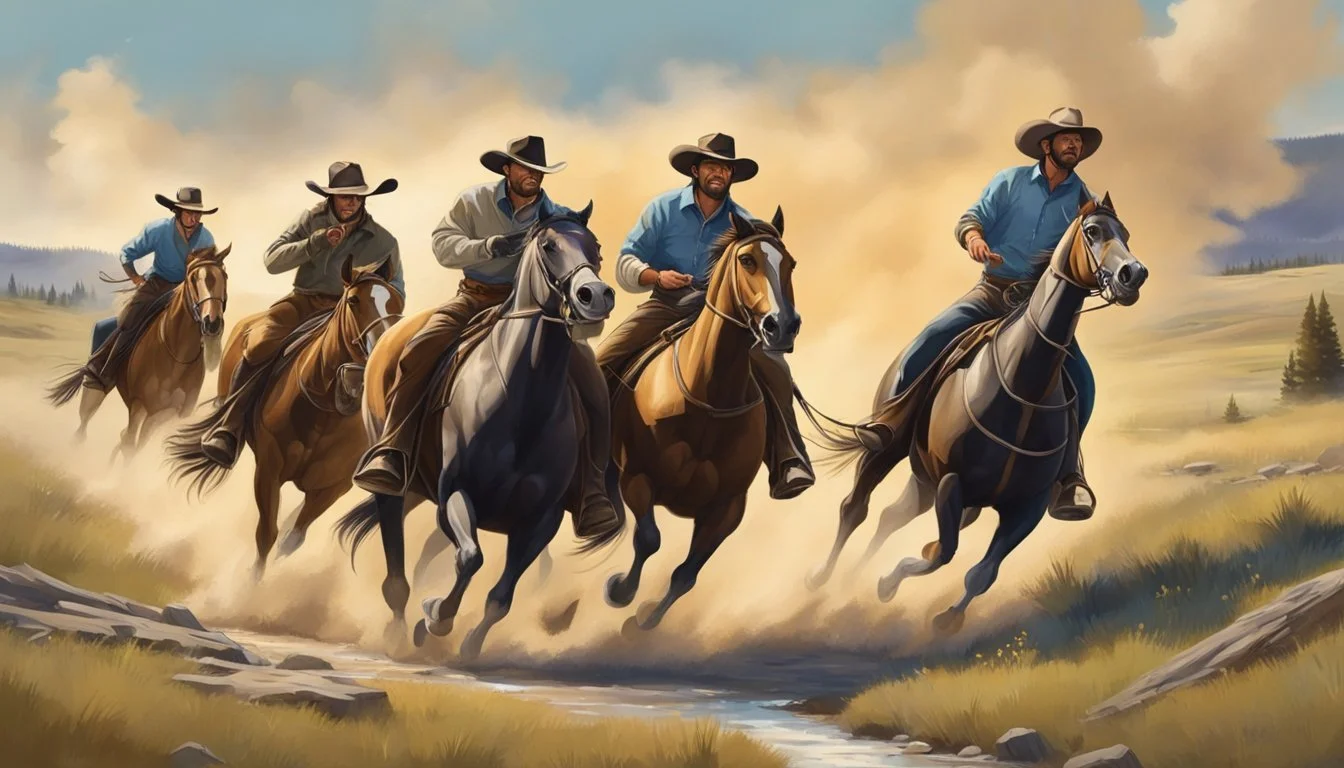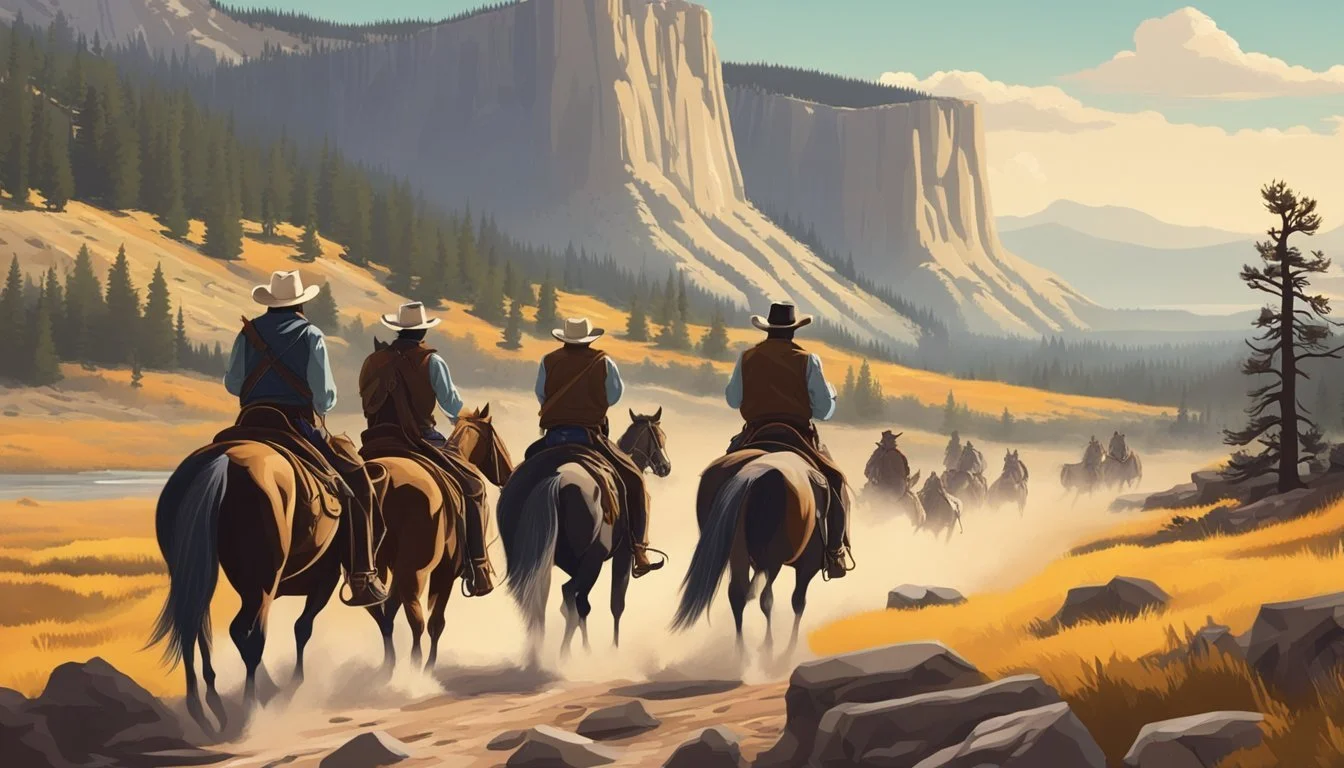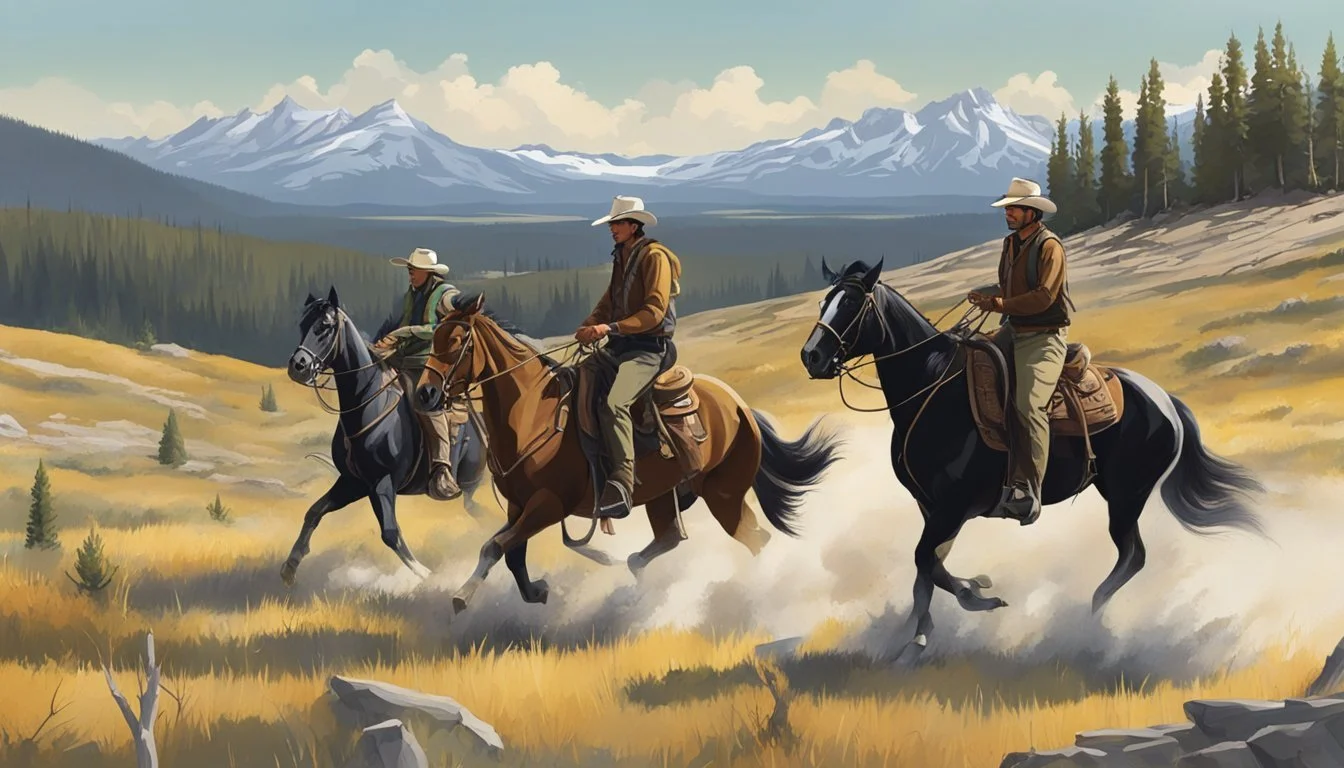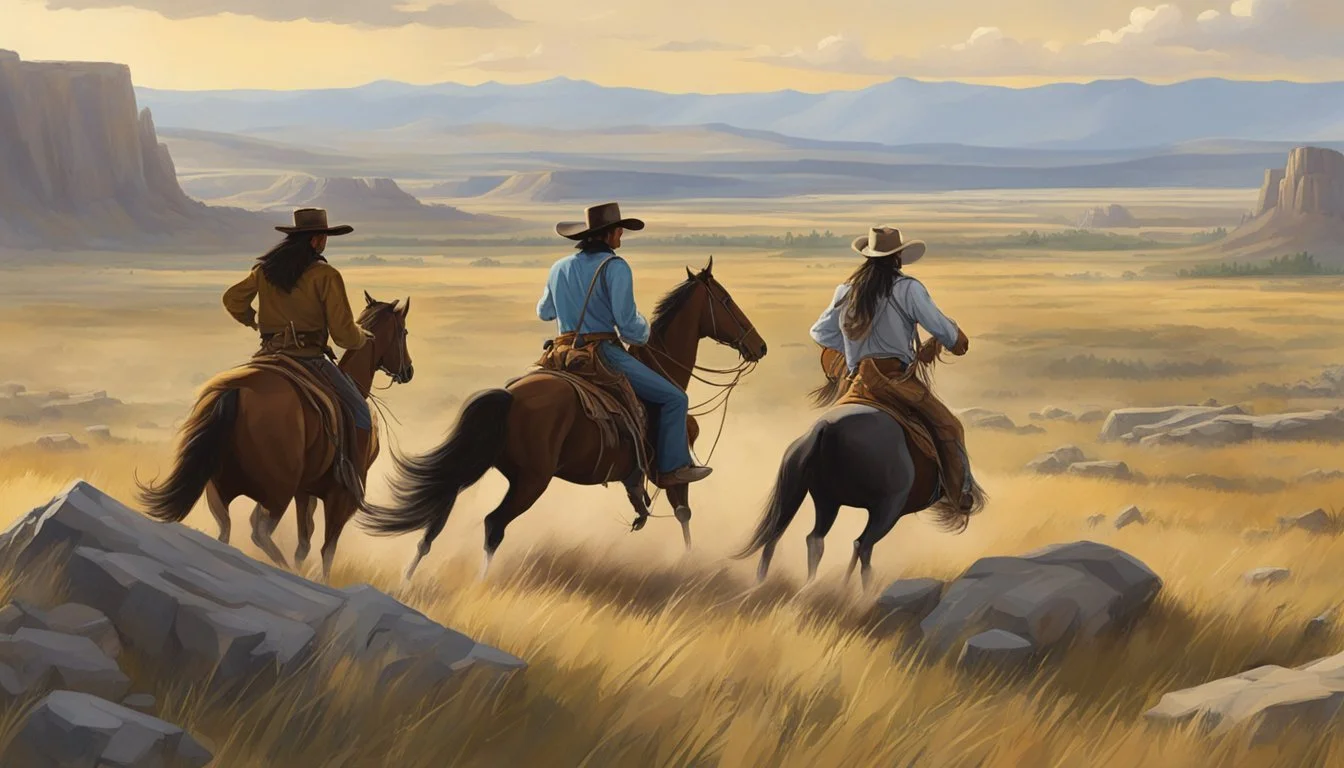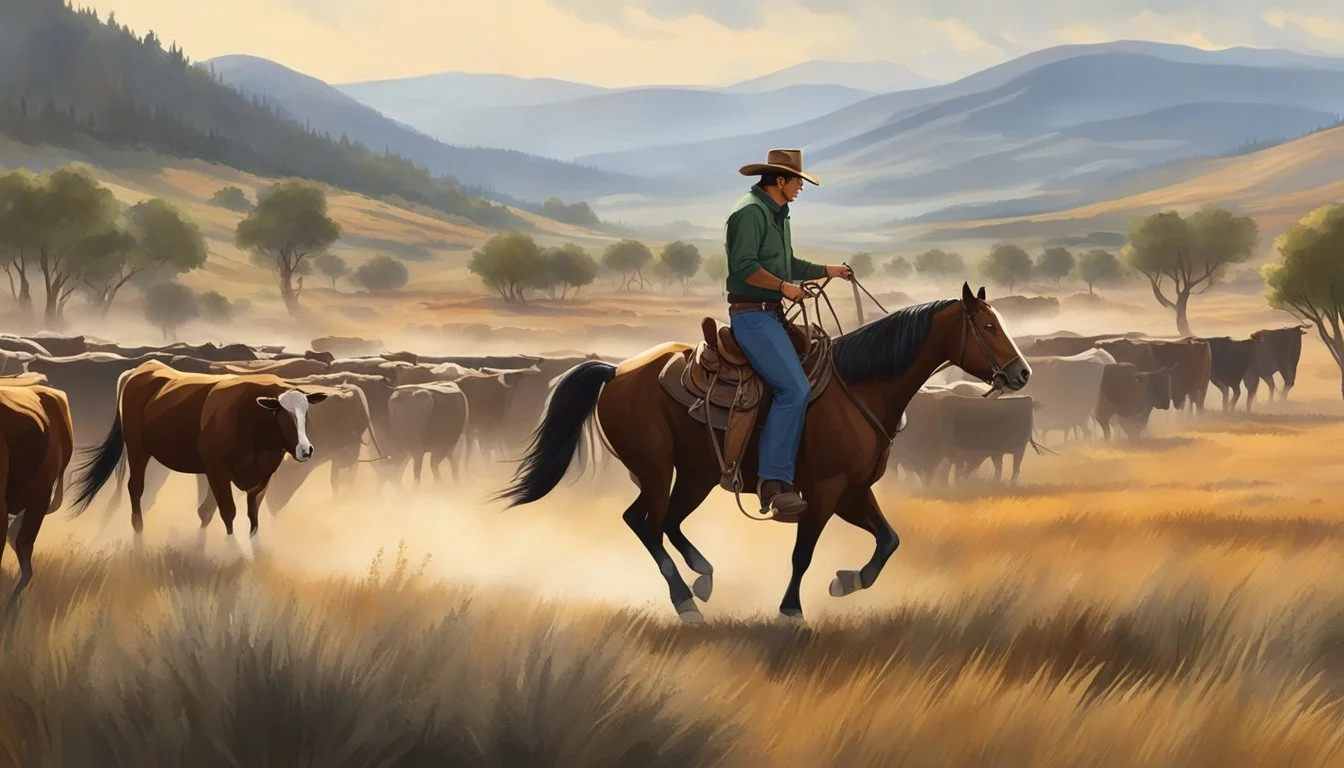Discover the Shocking Truth Behind the Real Yellowstone Ranch Location
The Yellowstone Ranch featured in the hit TV series "Yellowstone" has captivated audiences with its stunning scenery and sprawling landscapes. While the Dutton Ranch is fictional, it is based on a real-life location called Chief Joseph Ranch in Darby, Montana. This 2,500-acre working cattle ranch serves as the primary filming location for the show.
Chief Joseph Ranch, which doubles as the Dutton Ranch in "Yellowstone," is owned by the Libel family and operates as both a working ranch and a guest accommodation. Visitors can experience the breathtaking views and immerse themselves in the same environment where Kevin Costner portrays John Dutton, the patriarch of the Dutton family.
The ranch's history and natural beauty contribute to the authenticity of the "Yellowstone" series created by Taylor Sheridan. Its proximity to Yellowstone National Park adds to the allure, making it an ideal setting for the dramatic storylines that unfold in the show. The real-life ranch's integration into the fictional world of the Duttons demonstrates the skillful blend of reality and imagination in creating the captivating universe of "Yellowstone."
The Origin and Cultural Significance
The Yellowstone ranch depicted in the TV series draws inspiration from real historical events and locations in Montana. Its origins are rooted in the complex history of the American West, involving conflicts between settlers and Native American tribes.
Historical Inspiration
The fictional Dutton ranch is based partly on the Chief Joseph Ranch in Darby, Montana. This working cattle ranch dates back to 1880 and spans 2,500 acres. Originally homesteaded by settlers, it grew into a thriving operation by the early 1900s. The ranch's iconic log mansion, built in 1917, now serves as the Dutton family home in Yellowstone.
The show's setting near Yellowstone National Park reflects the real tensions between ranchers, developers, and conservationists in the region. Many large Montana ranches face similar pressures portrayed in the series, balancing tradition with modern economic realities.
Nez Perce War and Local Tribes
The ranch's location carries significance tied to the Nez Perce War of 1877. During this conflict, the Nez Perce tribe, led by Chief Joseph, fled through the area while resisting forced relocation. The war ended near the Montana-Canada border, profoundly impacting the region's history.
Today, the land around Yellowstone remains culturally important to several Native American tribes. The nearby Crow Indian Reservation and ancestral lands of the Salish people add layers of cultural complexity to the region. These historical and ongoing relationships between ranchers, tribes, and the land inform the show's portrayal of modern conflicts over territory and resources.
The Setting
The Yellowstone ranch is set in a stunning landscape that captures the rugged beauty of Montana. Its location and surroundings play a crucial role in creating the show's authentic Western atmosphere.
Geographical Locale
The real-life Yellowstone ranch is situated in Darby, Montana, a small town of about 720 residents. It lies in the picturesque Bitterroot Valley, approximately 65 miles south of Missoula. The ranch's setting offers breathtaking views of the Bitterroot mountain range and is near the Idaho border.
The area's natural features include the Bitterroot River, which flows through the valley. This pristine waterway adds to the ranch's scenic appeal and provides opportunities for fishing and other outdoor activities.
Historically significant, the ranch sits on a trail once traversed by the Lewis and Clark expedition. This connection to America's westward expansion adds depth to the location's rich cultural heritage.
Filming Locations in Montana
The primary filming location for Yellowstone is the Chief Joseph Ranch near Darby. This 2,500-acre working cattle ranch serves as the fictional Dutton Ranch in the series.
The ranch's main house is a 5,000-square-foot log cabin mansion. It features prominently in the show as the Dutton family home. When not being used for filming, the ranch operates as a family residence and working cattle operation.
Other filming locations in Montana include:
Areas around Missoula
The Bitterroot Valley
Parts of Ravalli County
These diverse locations help capture Montana's varied landscapes, from rolling prairies to towering mountains.
Representation of Bitterroot Valley
Yellowstone's portrayal of the Bitterroot Valley accurately reflects the region's natural beauty and ranching culture. The show showcases the valley's expansive skies, pristine rivers, and rugged mountain ranges.
The series depicts the challenges faced by modern ranchers in this area, including land use conflicts and economic pressures. This representation resonates with many locals who experience similar issues.
While some scenes are dramatized for television, the show's setting provides an authentic backdrop of Montana ranch life. It highlights the valley's stunning vistas, diverse wildlife, and the enduring spirit of its residents.
Chief Joseph Ranch as the Focal Point
Chief Joseph Ranch serves as the real-life backdrop for the fictional Yellowstone Dutton Ranch. This working cattle ranch in Montana boasts a rich history, stunning architecture, and offers unique opportunities for visitors.
The Ranch's History
Chief Joseph Ranch traces its origins to the 1880s. The property sits on a trail once traveled by the Lewis and Clark expedition. Named after the famous Nez Perce leader, Chief Joseph, the ranch has witnessed significant historical events. In 1914, glass tycoon William Ford and Federal Judge Howard Clark Hollister purchased the land and began construction of the main lodge.
The ranch changed hands several times over the years before becoming the filming location for "Yellowstone" in recent times. Its transformation from a working ranch to a Hollywood set has brought renewed interest to this historic property.
Architecture and Design
The centerpiece of Chief Joseph Ranch is the Ford-Hollister Lodge, an impressive log structure featured in Architectural Digest in 1994. Built in the style of National Park lodges, it showcases grand timber framing and expansive windows that frame breathtaking views of the surrounding Bitterroot Mountains.
The ranch's design blends rustic charm with luxury. Multiple cabins dot the property, including the Ben Cook Cabin, which serves as a guest accommodation. The buildings maintain their historic character while providing modern amenities.
Stone fireplaces, wooden beams, and period furnishings contribute to the authentic Western atmosphere that made the ranch an ideal choice for the "Yellowstone" series.
Ranch Operations and Tourism
Chief Joseph Ranch continues to function as a working cattle operation, maintaining its roots in Montana's agricultural heritage. The property spans thousands of acres, supporting livestock and preserving traditional ranching practices.
When not used for filming, the ranch welcomes visitors. Two cabins are available for rent: The Fisherman Cabin (known as Lee Dutton's Cabin in the show) and The Ben Cook Cabin. These accommodations allow fans to immerse themselves in the "Yellowstone" experience.
Guests can explore the grounds, enjoy fishing in the nearby river, and take in the same stunning vistas that serve as the backdrop for the popular television series. The ranch's dual role as a working farm and tourist destination offers a unique glimpse into both Montana's ranching culture and the world of television production.
Characters and Storylines
The Yellowstone series features complex characters and storylines that intertwine family drama, power struggles, and conflicts over land. Key elements include John Dutton's leadership, intricate family dynamics, and tense relations with local tribes.
John Dutton's Leadership
John Dutton, portrayed by Kevin Costner, stands as the patriarch of the Dutton family and owner of the largest contiguous ranch in the United States. His leadership style is marked by a fierce determination to protect his land and legacy. John faces numerous challenges, from corporate developers to government officials seeking to encroach on his property.
He often employs unconventional and sometimes questionable tactics to maintain control. John's character draws inspiration from real-life ranchers who have fought to preserve their way of life in the changing American West.
Family Dynamics
The Dutton family's internal relationships form a central pillar of the show's narrative. Each family member grapples with their role within the ranch and their personal aspirations.
Beth Dutton, John's daughter, is a sharp-tongued businesswoman fiercely loyal to her father. Kayce Dutton, John's son, struggles to balance his responsibilities to the ranch with his own family.
Jamie Dutton, the adopted son, often finds himself at odds with his family's interests. These complex interactions create tension and drama that drive many of the show's storylines.
Conflict and Alliance with Local Tribes
The relationship between the Dutton Ranch and the neighboring Broken Rock Reservation is a significant source of conflict in the series. Thomas Rainwater, the reservation's chairman, often clashes with John Dutton over land rights and resources.
This storyline reflects real-world tensions between ranchers and Native American tribes in the Western United States. The show explores themes of historical injustice, sovereignty, and the struggle for economic development on reservation lands.
At times, the Duttons and the tribe form uneasy alliances against common threats, adding layers of complexity to their interactions.
On-Site Filming Elements
The Yellowstone ranch features several key filming locations that contribute to the show's authentic Western atmosphere. These elements play crucial roles in character development and storylines.
Significance of the Cabins
Cabins on the Yellowstone ranch serve as important settings for character interactions and plot development. Rip's cabin, a modest structure, reflects his humble beginnings and loyalty to the Dutton family. It becomes a sanctuary for Rip and Beth as their relationship evolves.
Lee's cabin, though less frequently shown, holds sentimental value for the Dutton family. It stands as a reminder of their eldest son's legacy and the ranch's importance to the family.
The cabins' rustic architecture and interior design capture the essence of Montana ranch life. Their placement on the vast property allows for stunning landscape shots that showcase the ranch's beauty.
The Famous Bunkhouse
The bunkhouse is a central hub for the ranch hands and a key filming location. Its weathered exterior and worn interior authentically represent the working cowboy lifestyle. Inside, the bunkhouse features bunk beds, a common area, and personal touches that bring the characters to life.
The bunkhouse scenes often reveal the camaraderie and conflicts among the ranch hands. It's where alliances form, secrets are shared, and tensions rise. The set designers have paid meticulous attention to detail, incorporating elements like saddles, boots, and cowboy hats to create a lived-in feel.
Group scenes filmed in the bunkhouse provide insight into the ranch's day-to-day operations and the loyalties of its workers.
Rip and Beth's Character Development
The on-site filming elements play a crucial role in Rip Wheeler and Beth Dutton's character arcs. Rip's cabin becomes a symbol of his devotion to the ranch and his growing relationship with Beth. The intimate scenes filmed here reveal Rip's softer side and Beth's vulnerability.
Beth's interactions around the ranch, from the main house to the stables, showcase her fierce loyalty to her family and the land. The contrast between her corporate persona and her behavior on the ranch is often highlighted through these on-location shoots.
The vast outdoor spaces of the ranch provide a backdrop for pivotal moments between Rip and Beth. Their horseback rides and conversations against the Montana landscape deepen their connection to each other and the land.
Representation in Media
The Yellowstone series has significantly impacted popular culture's perception of modern ranching. Its portrayal of the Dutton family and their ranch has captivated audiences and sparked discussions about ranch life in contemporary America.
Yellowstone Series' Impact
Paramount Network's Yellowstone, created by Taylor Sheridan, offers a dramatic portrayal of a fictional Montana ranch. The show blends authentic elements of ranch work with heightened drama. It showcases the seasonal nature of ranch hand jobs and the importance of horsemanship in ranch culture.
Kevin Costner's portrayal of John Dutton lends credibility to the rancher image. The series depicts bunkhouse scenes that reflect the camaraderie found on real ranches. While some aspects are dramatized for television, the show's attention to detail in ranch work adds a layer of authenticity.
Fandom and Cultural Influence
Yellowstone has cultivated a dedicated fanbase, sparking interest in ranch life and the American West. The show's popularity has led to increased tourism in Montana and surrounding areas. Fans often seek out experiences that mirror the lifestyle portrayed on screen.
The series has influenced fashion trends, with viewers emulating the characters' Western wear. It has also reignited discussions about land use, conservation, and the challenges facing modern ranchers. Online communities have formed where fans debate plot points and share their appreciation for the show's depiction of ranch life.
Yellowstone's cultural impact extends beyond entertainment, shaping public perceptions of ranching and rural America.
Comparison with Real-Life Ranches
The Yellowstone Dutton Ranch draws inspiration from several iconic American ranches. While fictionalized for television, it shares similarities with historic and modern working ranches across the Western United States.
The Legacy of King Ranch and 6666 Ranch
King Ranch in Texas spans 825,000 acres, dwarfing Yellowstone's fictional 500,000 acres. Founded in 1853, it pioneered cattle breeding programs and land management practices. The 6666 Ranch in Texas covers 266,000 acres and is renowned for its quarter horse breeding program. Both ranches emphasize diversification, balancing cattle operations with oil and gas leases.
Like Yellowstone, these ranches faced challenges from changing economic landscapes and environmental pressures. They adapted by embracing new technologies and sustainable practices while maintaining their ranching heritage.
Modern Working Ranches
Today's working ranches are smaller than Yellowstone's portrayal but still substantial. Many span tens of thousands of acres. They often combine traditional ranching with eco-tourism, hunting leases, and conservation efforts.
Modern ranches use advanced technologies like GPS tracking for livestock and drones for land surveying. Unlike Yellowstone's dramatic conflicts, real ranches focus on sustainable land management and efficient operations.
Some ranches offer guest experiences, allowing visitors to participate in cattle drives and ranch work, bridging the gap between fiction and reality.
Cattle Ranching and Livestock
Real cattle ranches typically run fewer head of cattle than depicted in Yellowstone. A large ranch might manage 5,000-10,000 cattle, compared to Yellowstone's tens of thousands.
Breeds vary by region, with Angus and Hereford being popular. Some ranches, like Yellowstone, crossbreed for specific traits. Unlike the show's focus on traditional methods, many real ranches use artificial insemination and embryo transfer to improve genetics.
Ranchers often diversify their herds, raising sheep or goats alongside cattle. This practice helps with land management and provides additional income streams.

